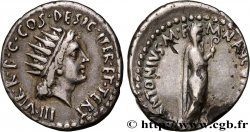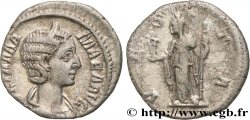Live auction - brm_344597 - DOMITIUS AHENOBARBUS Denier
You must signin and be an approved bidder to bid, LOGIN TO BID. Accounts are subject to approval and the approval process takes place within 48 hours. Do not wait until the day a sale closes to register. Clicking on "BID" constitutes acceptance of the terms of use of cgb.fr private live auctions.
Bids must be placed in whole Euro amounts only. The sale will start closing at the time stated on the item description; any bids received at the site after the closing time will not be executed. Transmission times may vary and bids could be rejected if you wait until the last second. For further information check the Live auction FAQ
All winning bids are subject to a 18% buyer’s fee.
All winning bids are subject to a 18% buyer’s fee.
| Estimate : | 3 800 € |
| Price : | 2 800 € |
| Maximum bid : | 3 001 € |
| End of the sale : | 31 March 2015 14:39:54 |
| bidders : | 4 bidders |
Type : Denier
Date: 41 AC.
Mint name / Town : Grèce
Metal : silver
Millesimal fineness : 950 ‰
Diameter : 19,00 mm
Orientation dies : 9 h.
Weight : 3,80 g.
Rarity : R3
Coments on the condition:
Exemplaire sur un flan ovale, bien centré des deux côtés avec les grènetis visibles. Beau portrait de Ahenobarbus. Magnifique revers de style fin. Patine grise aux reflets dorés
Catalogue references :
Predigree :
Cet exemplaire provient de la collection de M. Robert Couet
Obverse
Obverse legend : AHENOBAR.
Obverse description : Tête nue d’un homme (un ancêtre de Cnæus Domitus Ahenobarbus représenté jeune ?) à droite (O°).
Obverse translation : “Ahenobarbus”, (Ahenobarbus).
Reverse
Reverse legend : CN DOMITIVS IMP.
Reverse description : Proue de vaisseau à droite sur lequel figure un trophée militaire composé d’une cuirasse, d’un casque, de deux lances et d’un bouclier ovale.
Reverse translation : “Cnaeus Domitius Imperator”, (Cnæus Domitus Imperator).
Commentary
Pour ce type, M Crawford a recensé une estimation inférieure à trente coins de droit et inférieure à trente coins de revers. Ce denier est en fait encore beaucoup plus rare que ne le laissent supposer les ouvrages généraux.








 Report a mistake
Report a mistake Print the page
Print the page Share my selection
Share my selection Ask a question
Ask a question Consign / sell
Consign / sell









